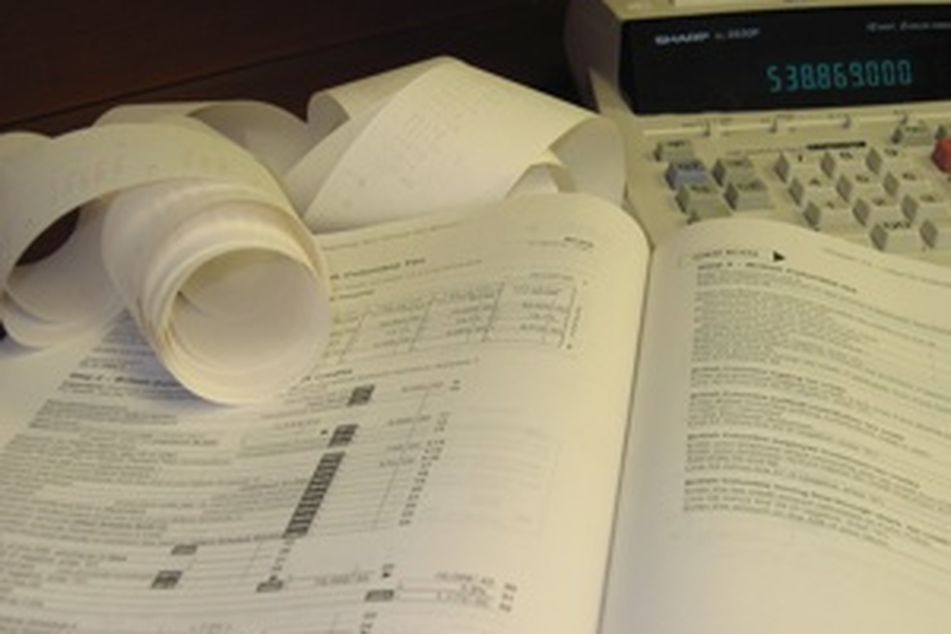So what’s Kotlikoff’s Purple Tax Plan — and will it actually work?
 Under prof's plan, this would become a relic
Under prof's plan, this would become a relic
Proposed reform mixes in wins for both blues (Democrats) and reds (Republicans); accountants, advisers may boo, however
Our economy desperately needs a swift kick in the pants, one that delivers millions of jobs and extra tax revenue. A sweeping, pro-growth tax reform, which I call the Purple Tax Plan, is the ticket. It would boost government coffers by 20% over time and make both red Republicans and blue Democrats happy.
The plan does four things. First, it makes the regressive payroll tax progressive. Instead of taxing workers and their employers at a combined 15.3 percent rate up to $106,800 and at a combined 2.9 percent above the ceiling, the plan levies the employee half of the tax only on earnings above $40,000 and eliminates the ceiling. This is something the Democrats can crow about.
Second, the reform replaces our byzantine and horribly wasteful personal income tax with a simple federal sales tax. The levy covers retail purchases plus consumption services (what economists call imputed rent) that we enjoy from our homes, boats, cars, planes and other major durables. It also taxes all consumption done abroad.
To make the sales tax progressive, the plan provides a monthly payment to every household based on its size. This so-called demogrant is large enough to ensure the poor pay no net sales tax, while the rich pay a lot. Democrats should like this feature, too.
Republicans can correctly claim they have slashed tax rates. The sales tax rate would be 17.5% — well below that foreseen in the FairTax, a separate reform plan that has gained a large following. On every dollar spent, 15 cents goes for taxes and 85 cents for consumption, since 15 cents is a 17.5% markup on 85 cents.
Hence, whether the dollar comes from earnings or wealth, it’s effectively taxed at 15%. That’s much lower than the top four personal-income tax brackets. The Democrats can champion this “tax cut,” too, since the sales levy effectively taxes wealth, thus hitting the rich harder than just taxing income from wealth.
Both parties can cheer Provision 3 — switching our dysfunctional and easily evaded estate and gift taxes to a 15% levy on all inheritances and gifts received above $1 million.
They can also support eliminating the corporate income tax – the plan’s remaining provision. A zero corporate tax will make the U.S. an investment haven, giving it a shot at experiencing what Ireland enjoyed after it dramatically cut its company rate: a major influx of investment and faster growth in jobs and wages.
Mobile Investors
The corporate tax falls primarily on immobile workers, not mobile investors. Boost the rate, and corporations leave, but workers stay and suffer. This is why the machinists’ union wants to force Boeing Co. to build the 787 Dreamliner in its unionized Washington State plants.
To better understand who is hurt and helped, consider Jamie, an investment banker with $1 billion in assets and $50 million in income, half of which is labor earnings. Under the reform, Jamie’s payroll taxes rise by $3 million.
But the 15% effective sales tax is lower than the 17% income tax Jamie now faces, assuming her average rate is the same as Warren Buffett’s. Saving 2 percentage points means Jamie’s total taxes on her $50 million income rise by $2 million, not $3 million.
This, by itself, represents an almost 25% tax increase. But there’s a big kicker: Jamie is also hit with an immediate 15% tax on her wealth. The day the tax is implemented, prices will rise 17.5% and the purchasing power of Jamie’s wealth will fall by 15%, or $150 million.
True, Jamie can decide when to physically hand over the wealth tax. She can give the government the $150 million by spending all $1 billion now. Alternately, Jamie or her heirs can pay the tax with interest by spending the $1 billion plus any earnings on it later. Either way, in present-value terms, she’s out $150 million on Day 1.
Sam the Janitor
What about Sam, the janitor, who earns $20,000 and is penniless? The plan cuts his federal taxes by 20%, given all its provisions.
Rich Jamie’s taxes skyrocket and poor Sam’s drop — a blue fantasy wrapped in red paper.
The plan also improves work and saving incentives. Jamie pays an average income tax of 17%, but about 40% on extra labor earnings. Under the reform, her marginal rate drops to 30%. Sam’s marginal rate on earnings falls, too, from 25% to 22%.
Under the current tax system, both Jamie and Sam lose about 20 cents on the dollar if they defer consumption — that is, if they save instead of spend. Under the reform plan, they lose nothing. It would incentivize them and all other Americans to save and join foreigners in investing on a corporate-tax-free basis in our country. Growth and jobs would follow.
The reform eliminates almost all filing by households, an enormous time sink, and requires business to collect only payroll and sales taxes. Our army of tax professionals can switch to productive work.
By setting all tax rates effectively at 15%, the plan provides a check on over-spending by the government. Everyone will know that if Congress spends more on anyone or anything, this single rate will rise. This makes it politically tougher for politicians to spend.
Tax reform can be win-win. Hopefully, the Congressional supercommittee, charged with reducing the federal budget deficit by $1.5 trillion over the next 10 years, will make it happen.
Laurence J. Kotlikoff, a professor of economics at Boston University, is a Bloomberg View columnist. The opinions expressed are his own.
Learn more about reprints and licensing for this article.





